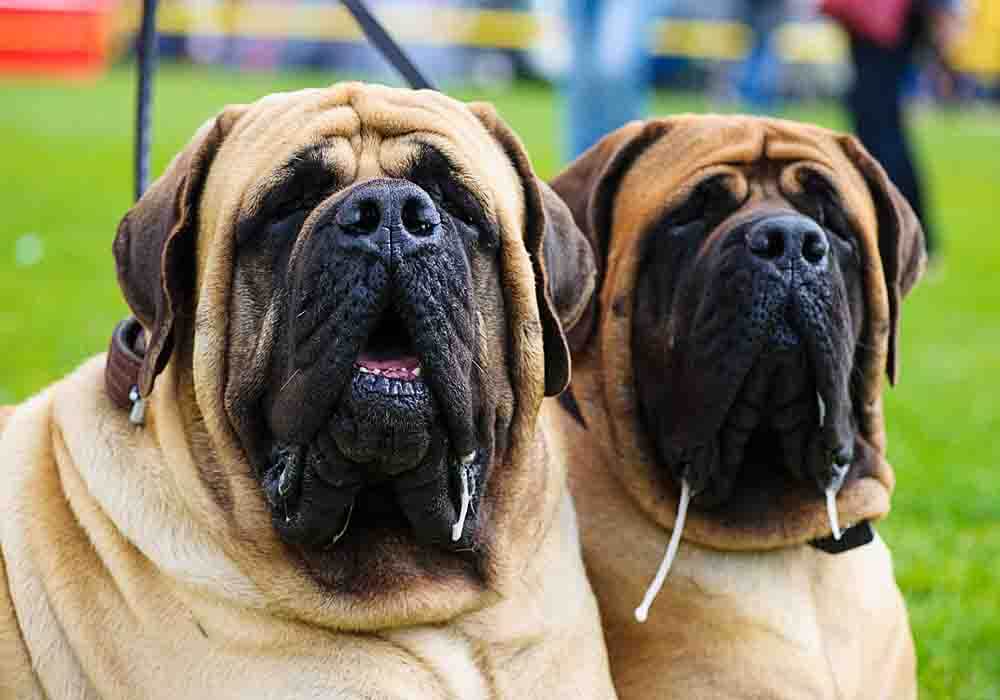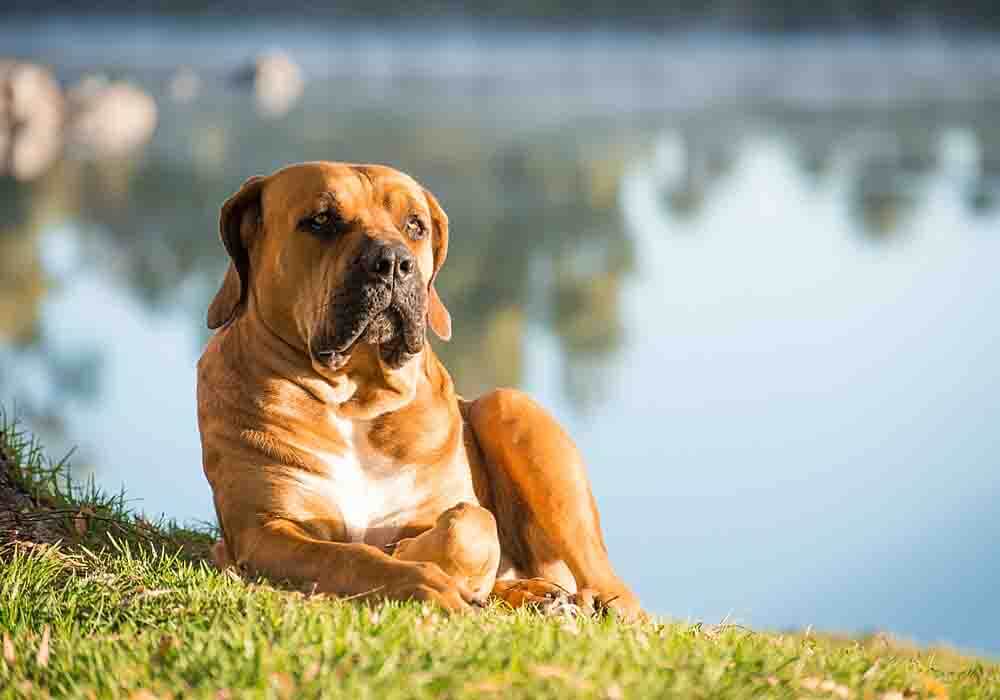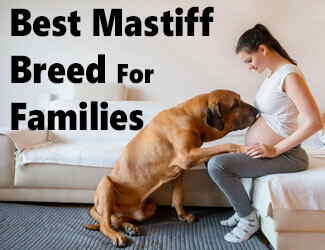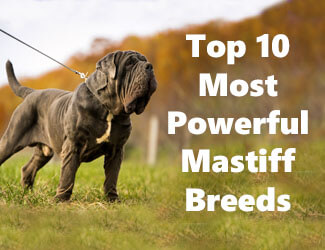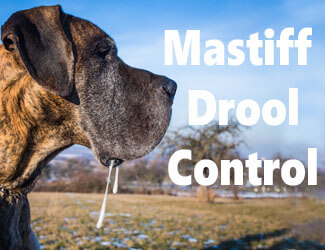South African Boerboel
Mastiff
Dog Breed Facts and Information
by Ken Alden
The South African Boerboel is a Mastiff-like dog breed. These dogs are very large in size and have impressive physical strength. They are very vigilant and make the best guard dogs out of all breeds. All of this can make potential owners curious about this breed’s behavior as a pet.
South African Boerboel Mastiff Facts...
- Boerboels are a very dominant breed.
- They aren’t good with other pets and need an equally dominant owner who can give stern commands.
- Training them is neither hard nor easy, so they’re good for novice owners. They need minimal grooming.
- Health issues are common.
- They eat a lot and are pretty active.
The traits we’ve mentioned (and will discuss in detail later) are based on observations and statistics. Much of a dog’s personality is formed by the training of its owner. Let’s dive in and read about this exceptional breed’s interesting history, traits, temperament, health issues, and pros & cons. Read More Below...
Pro-tip: Ever try lifting a Mastiff? Their weight can hurt not only your back but their joints when they hop down from cars, sofas or even your bed. To protect your back and theirs check out the best Mastiff ramps on Amazon.com now.
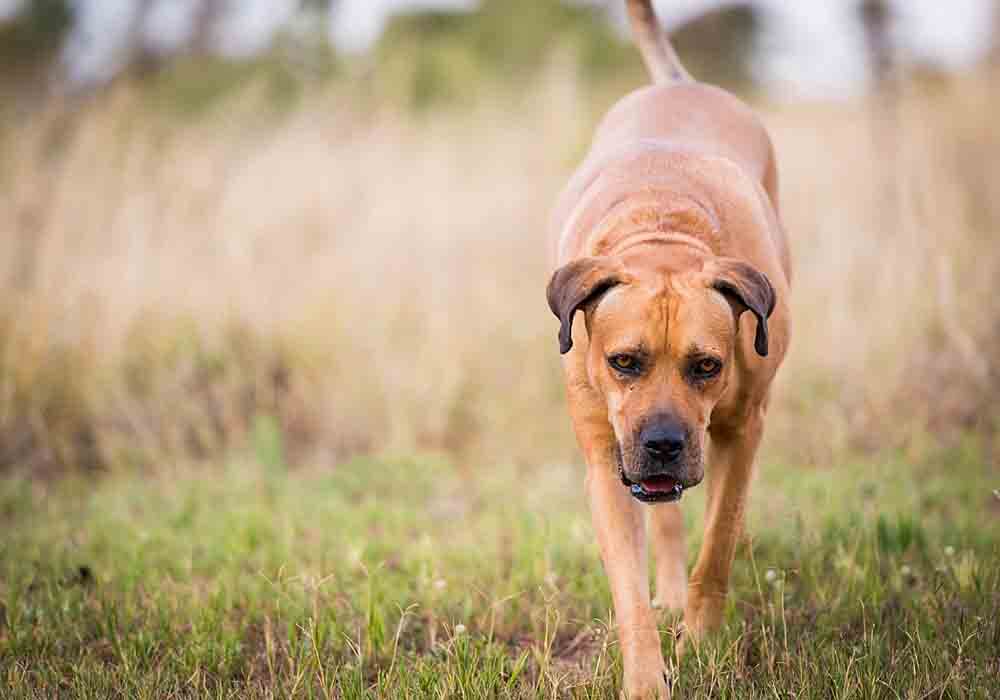
South African Boerboel Breed History
The Boerboel is a species of large guard dogs which is native to South Africa, where it originated from and is most commonly bred today. These dogs are considered to be living descendants of the Molossers, a breed of fierce dogs belonging to ancient Greek tribes. The Molossers eventually went extinct, and their descendants were popularly used as guard dogs in the Assyrian Empire.
It is believed that when this empire conquered Egypt, some dogs were sent towards the region we now know as South Africa. These dogs were also sent all across Europe and Asia. These would later evolve to become Mastiffs, Bulldogs, and other large guard dog species. Bulldogs and Mastiffs were then bred with African and European species like Rhodesian Ridgeback by the African people. Thus, Boerboels were born.
These dogs were originally bred by farmers to protect their land from ferocious predators. Their name, Boerboel, is evidence of this. The word “Boer” is an Afrikaans word for “farmer,” while “Boel” is a slang term meaning “dog.”
The first of their kind were bred in the mid-1600s. Since they were developed by farmers working in remote areas of Africa, no records of their early breeding were kept. These dogs were crossbred with other similar dogs in the region again.
As time passed, this dog was crossbred for different purposes. They were bred with Hounds and were used primarily for hunting. They were also bred with Mastiffs (which is the common species we know today) for protection from predators and for dogfights. South African Boerboel Mastiff
Since there’s no written record of the first breed of Boerboels, we don’t know any exact information as to how a European breed like Mastiff bred with local African dogs. It’s possible that Mastiffs were introduced by the Dutch colonial administrator Van Riebeeck who arrived in Cape Town (later Dutch Cape Colony) in 1652.
He brought with him a guard dog to protect his family during his trip to a then-unknown country. This dog, named “Bullenbijter,” was a large Mastiff-type breed.
The history of the Boerboel breed is rather extensive. They were used for protection during the Great Trek. The Great Trek was a migration of Dutch-speaking colonists in the mid-1800s eastwards towards the South African inland as a protest against the strict laws of British rule of Cape Colony.
This breed was also used as the first line of defense during feuds and against attacks of predators. Their value increased, and they were commonly used to wound the opponents and track objects and people. They were used by diamond mining companies to protect the area from thieves.
They were heavily bred with other species of dogs like Bullmastiffs, so an offspring with the traits of both could be born. These, coupled with the rapid urbanization of South Africa after the World Wards, sharply dwindled down the number of Boerboels, and they were classified as extremely endangered.
Now, even though this dog is no longer considered endangered, it is still a rare breed. A standard for the breed was set by dog-loving organizations in the 1980s so that cross-breeding can be avoided. They picked 72 dogs who matched their criteria. This helped recognize this dog as a breed. Dr. Carl Semencic, an American anthropologist, helped introduce the Boerboel standard or pure breed to the United States.
In 1983, the Boerboel Breeders Association was found. It was established in Senekal, Free State, South Africa. The main objective of this association was to promote the Boerboel breed as a dog unique to South Africa. Today, the breeding of this dog is a huge industry in South Africa. These dogs are exported to different parts of the planet and are adopted and bought by families, farmers, and businesses to protect their property. South African Boerboel Mastiff
Boerboels have gained many rights in different countries in the past decade. They have been banned from dogfighting. In January 2015, the American Kennel Club recognized them and classified them as working and companion dogs.
There are plenty of countries where their ownership is illegal. Boerboels cannot be purchased, sold, adopted, imported, or bred. This may be due to a couple of reasons, such as their rarity, their fierce nature, or past incidents with this breed.
These countries/states include France, Tunisia, Romania, Singapore, Mauritius, Malaysia, Qatar, Bermuda, Romandy (Switzerland), Denmark, and the Faroe Islands. Countries like Russia and Ukraine allow ownership of Boerboels only if the owner is deemed fit, is an adult and has court approval.
Pro-tip: Mastiff anxiety, aggression, destructive chewing, jumping up, fearfulness, and other behaviors can be controlled with the right training program.
Here’s a great course that
addresses these issues along with many other dog training basics: Check it out now!
South African Boerboel Mastiff Temperament
The South African Boerboel is very brave and bold in nature. Its personality is naturally dominant, while other traits are obtained as the dog grows up. This breed are born natural leaders and don’t get along very well with other dominant dog breeds. If you have one in your yard, nobody will dare trespass.
This breed loves human companionship. It’s not too social to the point it becomes irking but depends upon its owners enough to grow up playful and social. Proper training and socialization of the dog are needed since it's still a puppy. If raised right, these dogs can become wonderful, reliable, and obedient companions.
They are affectionate and protective of their owners as well. They can be a bit hostile towards strangers in protecting their owners. Their fearlessness and self-confidence make them amazing guard dogs. They don’t get along well with cats, dogs, and other pets. However, they form intense bonds with the whole family and care greatly for everyone. A well-trained Boerboel is safe around kids, but only with adult supervision.
Boerboels are playful and active. They don’t mind a good, long walk every now and then. They need some living space of their own to play indoors as well.
These dogs are very loyal to their owners and their properties. Even if they wander off for a bit, they return running. If they feel threatened or provoked, or if they feel like someone they care for is vulnerable, they won’t hesitate to attack. They listen to most of their owner’s commands and follow all orders.
This dog isn’t the kind of breed you’d want to
leave without its leash. It shouldn’t be roaming the streets without a leash.
If you’re at a dog park, make sure to keep some distance from other dogs. If
you’re meeting a stranger, avoid bringing the dog with you, or tell it about
the stranger. South African Boerboel Mastiff
South African Boerboel Characteristics
Boerboel Structure
As we know by now, these are pretty big dogs. The average height of a male Boerboel is anywhere between 25-28 inches (63.5-71 cm). On the other hand, the average height of a female Boerboel is between 23-25.5 inches (58.4-64.8 cm). There are some underlying genetic problems if a male’s height is below 23 inches/58.5 cm, and a female’s height is below 21 inches/53.3 cm. The average weight for this dog is between 155-200 pounds (70-91 kg).
Here are a couple of noticeable features of a Boerboel’s facial structure:
- The eye color of a healthy dog should be anywhere between a yellow and a brown tone. Blue eyes are a defect.
- The ear is v-shaped and medium-sized, situated above the head.
- The teeth should be a full set of 42, must be white and must leave a scissor bite.
- The nose is well-pigmented and black.
- The shape of the skull is square. It gradually decreases in
width until coming to the eye. At the stop, the skull bone shouldn’t be too
prominent.
Boerboel Coat
This dog boasts a short and dense coat. Their coat helps trap heat inside the body during the winter season while also preventing excessive heat absorption in summers. The coat is very smooth to touch if properly cleaned. Their coat is non-hypoallergenic.
The coat of Boerboels comes in a range of
colors ranging from a yellow tint to brown. The acceptable or natural colors of
their coat include cream, red, brindle, brown, tawny, and reddish-brown.
Reproduction
The gestation period of a female Boerboel is
usually around two months (60-64 days). To avoid any health complications, a
female should have a litter only once a year. Having a litter twice or more in
a year is very unhealthy for the mother, which often leads to her neglecting
the puppies and their needs. The average size of their litter is 6-7 puppies.
South African Boerboel Cost
Boerboels are bred in South Africa and
exported around the world. They are one of the more expensive dogs. A purebred
South African Boerboel Mastiff puppy can cost anywhere between $1500 and $2000, which
is more than twice the average ($700) price of a regular dog.
Boerboel Health Issues
The South African Boerboels suffer more from health issues when compared with other dog breeds. They require check-ups with vets often.
They are at low risk of catching fleas since their coat isn’t too dense and long, but the coat can cause allergies in owners. They also have common allergies like abrupt weather change, pollen, etc.
There are some major illnesses and disorders
Boerboels can contract or develop. These include:
Epilepsy
Epilepsy disrupts normal brain activity, leading to seizures, unusual
behavior, and loss of awareness. Epilepsy and dysplasia are the two most common
major health issues found in this dog breed.
Dysplasia
Dysplasia
is the development of cells at an abnormal
rate within a tissue. Dysplasia causes enlarged tissues and, if left untreated,
develops into deadly cancer. Dysplasia is usually found in connective tissue
like bones and has no definite trigger. The kinds of dysplasia found in
Boerboels include joint, hip, and vaginal.
Dementia
Dementia refers to a loss of cognitive functions. It only occurs in older
Boerboels. If a dog suffers from dementia, it’ll face the loss of memory, loss
of intelligence, difficulty in staying vigilant, and difficulty in
understanding commands. These dogs also start losing hearing and vision, though
it’s found in some very old ones.
Kidney Failure
Kidney failure isn’t restricted to only
Boerboels, and it has about the same percentage of occurrence in almost all dog
breeds. Nevertheless, it is still a possibility. Kidney failure can be brought
on by poor drinking water, dehydration, ingestion of toxic drink, or an unhealthy
diet. It may also be a side effect of medications. The signs of kidney failure
include trouble urinating and change in behavior due to abdominal pain.
Treatment is absolutely necessary.
Pro-tip: Mastiff's (and their owners) love dog crates…and for good reasons. Crates keep dogs from mischief while you're away, are perfect for house training, for traveling by car, and provide the dog a place to de-stress. Check out the best Mastiff crates on Amazon.com now.
Boerboel Good And Bad
Pros of Having a Boerboel
Boerboels Are Easily Groomed
These dogs are ideal for owners who don’t have
the skills, money, or time to spend on the grooming of their dogs, as they’re
very low maintenance. They almost never need a cut from a professional groomer.
Their eyes and ears need cleaning occasionally. Baths can be done once per
two-three months. Flea treatment sprays must be used once per season. Shedding
is normal, and regular brushing greatly reduces the amount of hair shed by the
dog.
Boerboels Are Elder-Friendly
The dogs get along really well with elderly
people as they need an owner who is loving and caring but doesn’t shy away from
being stern every once in a while. A dominant dog species needs a caretaker who
is also dominant, and elderly people really match the criteria. They can make
good dogs for veterans and old people who need a pet to keep them company but
don’t demand too much work.
They Are Playful
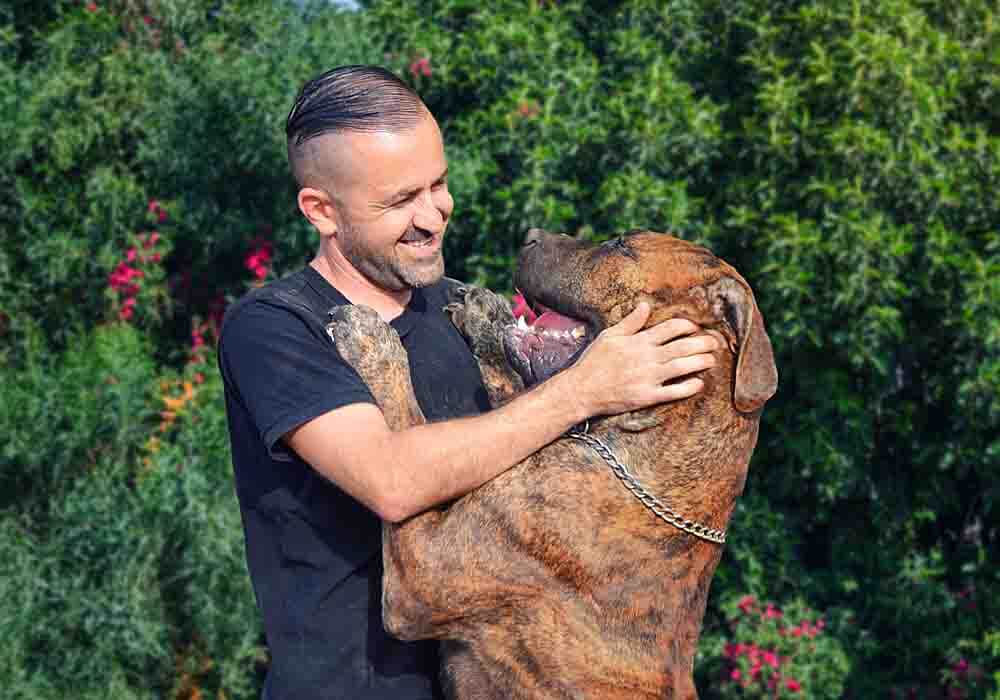
Boerboels aren’t extremely playful, but they really enjoy having fun. You can play games like fetch with them. Puppies love playing with toys like bones, balls, and wooden sticks. Young dogs may even bring home a twig or some object from their walk outdoors.
Boerboels Are Excellent Guard Dogs
Boerboels were bred to be guard dogs and
protect farmers from natural predators. A fiery and fierce nature is found in
their genes which makes them wonderful guard dogs. They won’t hesitate to
protect their territory from any threat. They also possess incredible
vigilance, a sharp sense of hearing, and the best vocal cords.
They Are Active
Boerboels are bulky dogs who eat a lot of food
and need to exercise. Their exercise, however, isn’t a burden for the owners. A
good 30-minute walk a day (with a leash on, of course) would be perfect.
Walking with the dog also benefits the owners and improves their health. They
aren’t lazy, so they can stand guard for their territory for many hours.
They Rarely Bark
Boerboels aren’t exactly the chatty-Kathys of
dogs. In fact, they’re one of the quieter dogs who don’t bark without a solid
reason. This is a great quality, especially for those who hate loud noises.
Some common reasons for this dog barking include excitement, anxiety, pain,
fear, boredom, loneliness, greeting, or alarm.
They Are Less Likely to Bite
Despite being fairly large and having an
incredibly impressive bite force of 800 psi (more than an adult lion!),
Boerboels rarely ever bite. They only bite if provoked, are dealing with
excruciating pain, or feel threatened. They don’t nip or chew on furniture and
only gently and playfully bite their owners as puppies, which needs training.
They Are Adaptable to Different Weather
Having lived in different climate zones for
centuries, these dogs can tolerate both cold and hot temperatures. Their coat
is efficient at heat insulation but prevents overheating as well. Of course,
you can’t expect them to walk around without getting chilly on the coldest day
of the year, but a sweater outdoors and some heat indoors will be enough.
Similarly, in summers, they can withstand hot temperatures but shouldn’t be
kept under direct sun for hours. South African Boerboel Mastiff
They Are Good for Sled Or Cart-Pulling
Boerboels are strong, determined dogs. They’ve
been bred in a way for centuries that makes them ideal for drafting/dog-cart
pulling. They’re good at pulling a sled as well. If you live in a mountainous
and snowy area and you are fond of sled-racing or need strong support to move
heavy sleds around, Boerboels can be a good pick.
They’re Moderately Social
Lastly, these dogs are moderately social. Why
is this a benefit? Well, you see, they’re not too dependent on their owners and
don’t mind chilling by themselves for a couple of hours. They don’t demand
attention throughout the day but aren’t too independent to not play or sit with
your family. It’s a perfect dog for working couples and students.
Cons of Having a Boerboel
They Aren’t Other Pet-Friendly
Boerboels aren’t friendly with other pets
because of their dominant nature. They don’t mind a little bird, a parrot, or a
couple of fishes, but they’ll likely cause problems if you have a rabbit, cat,
or other dogs as pets. Having a dog that’s very laid-back and submissive would
be a smaller issue than another dominant dog like a Bullmastiff or Pitbull. But
in general, these dogs go along with other pets very poorly.
They Aren’t Kid-Friendly
Despite what others may try to tell you with
big dogs being humble and child-friendly, they’re not. There’s a reason why
Boerboels are banned in many countries, especially for families with little
children. Unless you’re an experienced dog owner who has raised the dog from
when it was a puppy and trained it well to behave around kids, don’t go for
this breed.
They Can Cause Allergies
Unfortunately, Boerboels are one of the dog
breeds that have an increased chance of causing allergies in people who are
prone to dog’s saliva and dander (flakes found on a dog’s skin). They are not
hypoallergenic and shouldn’t be kept around people who suffer from a number of
acute or chronic allergies.
Boerboels Are Low Intelligence
Being honest, Boerboels are not the brightest
of dogs. Sure, they’re very focused and vigilant, but when it comes to pure
intelligence, they lack. It takes at least 50 tries to get a Boerboel to use a
trick or memorize an important command. They respond to the first new command
less than a third of the time. It’s safe to say that this breed isn't the right
choice for people who want a smart dog.
They’re Wanderers by Natures
In comparison to other breeds of dogs,
Boerboels have a higher tendency to wander off on their own. They have a drive
that makes them want to explore nearby areas. That’s a good reason why these
dogs need to be properly leashed, as a large dog roaming around on its own can
be intimidating for many people. If you live in a wooded area, your dog can
wander off in curiosity and lose it’s way back home.
They Are Unsuitable Therapy Dogs
Therapy dogs are trained dogs whose job is to
provide comfort, love, and affection to those who have some mental burden or
stress. Therapy dogs work in retirement homes, nursing homes, hospitals,
hospices, schools, charity organizations, and disaster areas or live with
owners who suffer from anxiety disorders, depression, or autism. Boerboels
aren’t the right breed for this task.
They Are Unsuitable Service Dogs
Service dogs or assistance dogs are dogs
specially trained to help people with certain disabilities and get them to help
in performing daily tasks. Service dogs are provided to people with hearing or
visual impairments, seizures, diabetes, mental disorders, and mobility
impairment. This breed isn't cut out to be service dogs. They are harder to
train to provide any benefit to their owners, and their general nature isn’t
what service dogs should behave like.
Boerboels Aren’t Apartment-Friendly
Boerboels, although adaptable to changes in
location, aren’t apartment friendly. They are big dogs who need their space to
play and walk. Even if you take them to the park often, it doesn’t compare to a
house environment with a porch, garden, and backyard. Plus, walking them down
and up the stairs is a task in itself. They simply aren’t made for the
apartment lifestyle.
They Love To Drool
Lastly, Boerboels drool a lot. Since they’re
closely related to Mastiffs, drooling is very common among them all. They’ll
leave saliva drops and stains in many places, and their mouth needs to be wiped
and washed quite frequently. If you’re not the kind who wants to keep a dog
that drools a lot, then don’t go for this dog.
South African Boerboel Mastiff Final Thoughts...
The South African Boerboel Mastiff is a large, dominant, agile, confident, territorial, courageous, loyal, and obedient breed. They have inherited these traits from their ancestors, who were used for hunting and guarding the land. So naturally, Boerboels make excellent guard dogs.
In comparison with other dog breeds, these dogs have more health issues, need less grooming, and require a lot of physical activity.
The Boerboel is good for new dog owners as
it’s easy going. With the right training, the dog becomes an excellent pet.
However, people who already have pets or have small children in the family
should look for a different breed.
Return to the top of this South African Boerboel Mastiff page

About the Author...
Ken Alden, a dedicated Mastiff owner for over eight years, is acclaimed for his expertise in care, grooming, and training. Read more About Me and my dog Shadow.
- Mastiff Guide Home ›
- Mastiff Breeds ›
- South African Boerboel Mastiff
